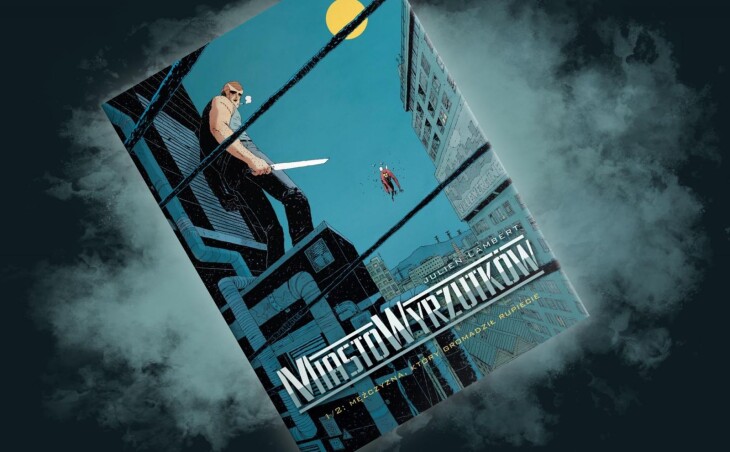A small but multi-faceted story of a guy who talks to things. Clutter tells him who and where has passed. Everything against the backdrop of a dying city.
The life of objects
It is possible that you can read the most interesting review of this comic in Fakt – and this is a great place for a text about the City of Outcasts . I am thinking of course about the paper edition, with paint staining my hands and illustrations of dubious quality. The ones abandoned in trams, reassembled many times, finally used for packing jars and similar farm work. Such a newspaper could easily find Julien Lambert’s dismal, empty housing estates, to be shaken by the wind, and eventually it would meet HIM – a guy who understands objects.
The French title of the comic is Villevermine– a city of outcasts, as translated by Jakub Syty, but also of “pests” or “vermin”. The world drawn by Lambert contains all these elements. Huge deserted buildings, including factory complexes rusty and devoured by strange moss or lichen. Derelict residential neighborhoods full of outbuildings and stray objects. They are ruled by local mafiosi and homeless kids organized in some kind of gangs. The main character of the story, Jacques Peuplier, traverses this gloomy area with his heavy stride, catching billboards and unwanted objects along the way. Some he takes home with him, a cluttered haven where he lives with his friends – junk. Because Jacques can talk to them. Much better than with people. As befits a hero of French literature, he deals not only with collecting – he can also be a detective. He’s looking for missing things and people. It is because of this profession that he will be involved in the disappearance or kidnapping of a young girl, the sister of several thugs with whom Jacques confronts on one of his cases.
Worms will turn out to be the biggest problem for the City and Peuplier. This plot has clear features of the grotesque and science fiction, there will be a classic evil … But without anticipating the facts: on the cover and the first pages, Jacques meets a flying man surrounded by flies. The guy wanders around the town, reaches the highest windows, peers into various nooks and crannies. For what? Does he have a secret plan? You will find out at the very end of the volume when the events will unfold at a pace much faster than the daily life shown at the beginning of the comic.
Francophone comic and manga
Lambert’s style will probably immediately remind you of the classic French line, thin, slightly torn, balancing between realism and cartoon style. You will think about Moebius or Manu Larcenet, which we have recently published. But the cartoonist also mentions manga among his inspirations, which interests him primarily in terms of the dynamics of fights and interactions between the characters. You won’t see it right away, but the choreography of the scenes or their very cinematic framing are indeed associated with Japanese drawings. Also the background of the events, the destroyed city, may bring to mind Inio Asano and other modern classics of the slice of life genre .
In keeping with the manga and bande dessinée tradition , City of Outcasts has the potential of a comic book series. So far, two volumes have been released , and the Man Who Collected Clutter does not actually close any topic, although you will learn a lot about the city itself and the forces of good or evil swirling in it. The other has some letting up. Lambert wrote another one some time ago, but no publisher has announced it yet.
Reading Lambert, and especially watching his frames, is definitely a pleasure. The city of outcasts is melancholic, a bit due to the blue-gray color palette dominating most of the pages. Its main character is a tough, sensitive and loner type, which adds another layer of sadness. It is balanced by a storyline that greatly increases the pace as you get closer to the last page. This screenplay debut has some shortcomings, although they can be explained by the specificity of a slowly dying city in which ferment is happening, but the forces of life do not necessarily balance the decay.

